Although some people only know Idaho for its potatoes, this state is actually more popular for its national parks and the abundance of gemstones waiting below the ground. Interestingly, if you look below the surface in the forests and meadows, you’ll find very interesting creatures. In particular, you’ll see that this state is home to many arachnids. Today, we’re going to shed some light on the biggest spiders in Idaho and tell you all about them.
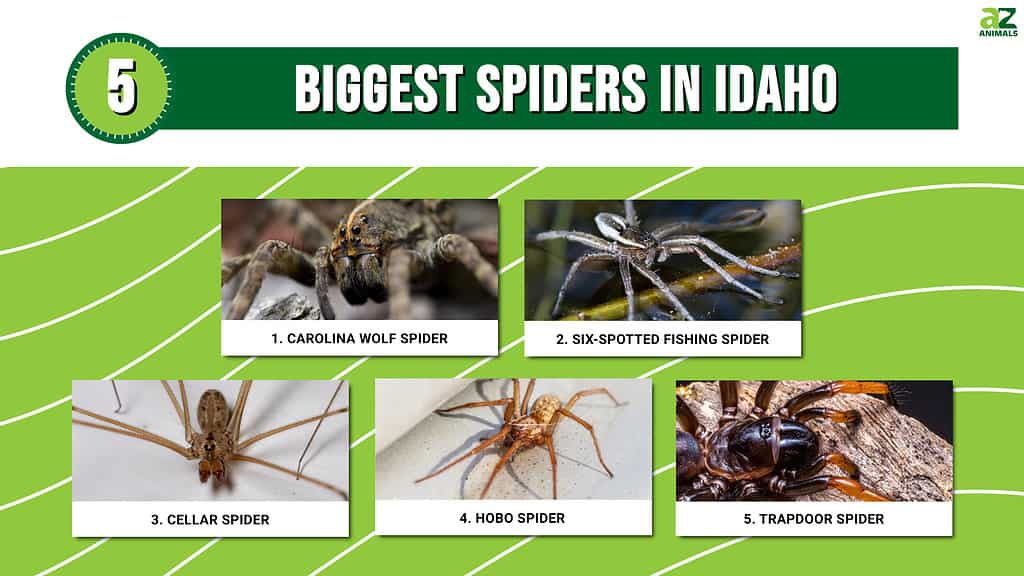
What Are the Biggest Spiders in Idaho?
The biggest spiders in Idaho belong to the wolf spider family, and that’s unusual considering that most states have a larger competitor. Nevertheless, we’re going to examine five of the most sizable species in the state, teach you what they look like, how big they get, and then identify the spiders you must truly worry about.
5. Trapdoor Spider
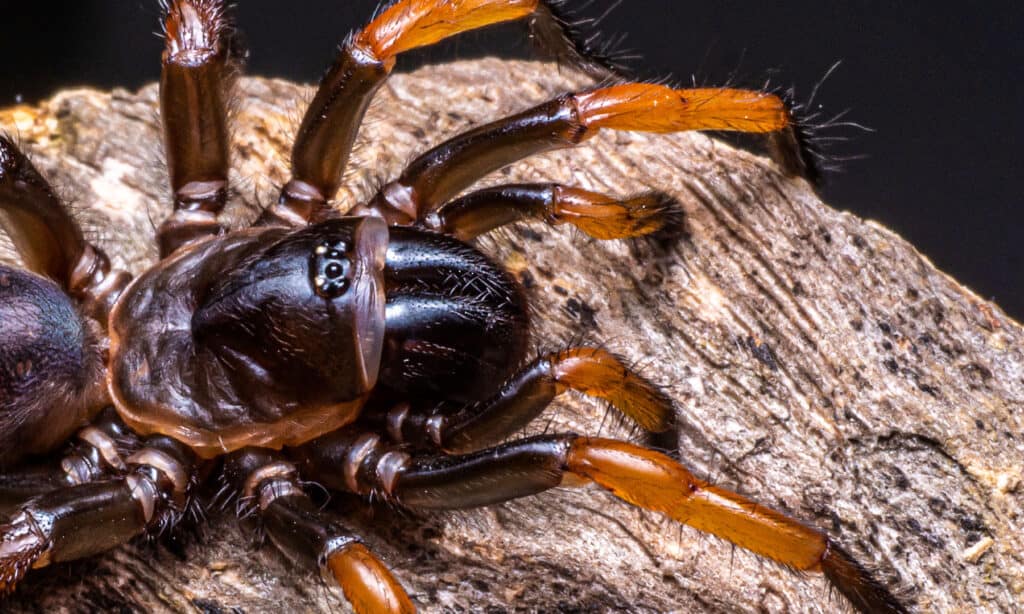
Trapdoor spiders spend their time in burrows.
©nokkaew/Shutterstock.com
| Scientific Name | Size | Danger to Humans |
|---|---|---|
| Ummidia Genus | 1-2 inches | Delivers a mildly painful bite. |
The trapdoor spiders of the Ummidia genus look scary, but they’re not all that bad. You would have to handle them or invade their burrows to get them to actually bite you. Even if they bite you, it would be mildly painful but otherwise insignificant.
The trapdoor spider often has a brown or black carapace with a tan or brown abdomen. The legs and cephalothorax are shiny, and the abdomen is matte.
These spiders are rarely encountered since they spend most of their time in a specialized burrow. They build these burrows with a hinged door which they leave somewhat ajar while they sit next to it and wait for their prey to walk by. Should the right insect pass, the spider will slam the door open, grab the prey, and drag it into the burrow.
4. Hobo Spider
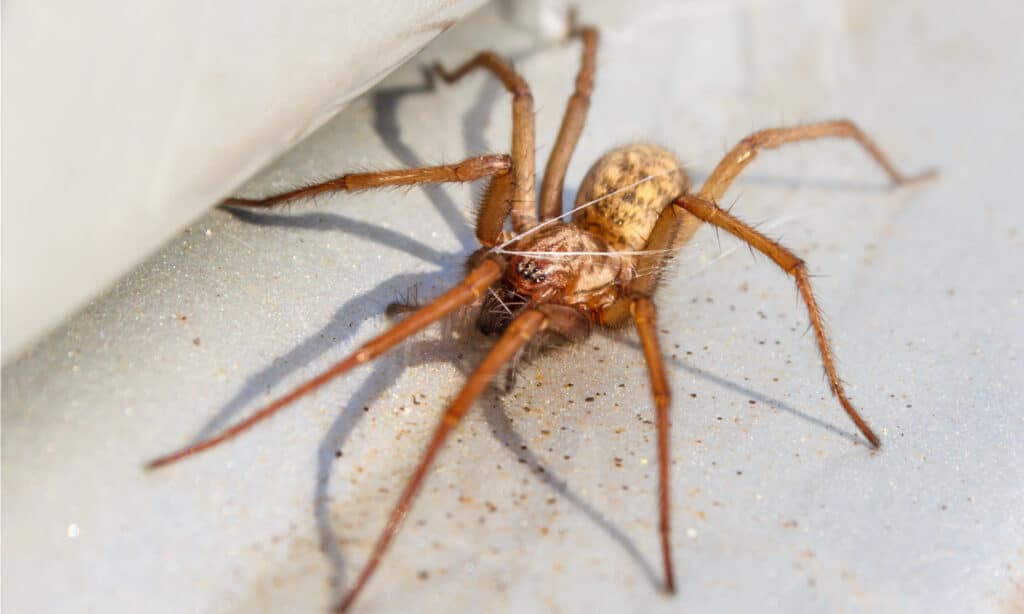
Hobo spiders are not as dangerous as initially reported.
©Andrew Balcombe/Shutterstock.com
| Scientific Name | Size | Danger to Humans |
|---|---|---|
| Eratigena agrestis | 1-2 inches | A bite can cause moderate pain and some redness at the site, but they’re not deadly. |
The hobo spider got a bad reputation for years, but it didn’t earn it. Scientists thought this spider could deliver a necrotic bite, but modern research proved them wrong. These spiders have long legs, a brown cephalothorax, and an abdomen that is brown, tan, or yellowish with dark marks.
Seeing this spider’s patterns may be hard if you don’t have some sort of visual assistance. Although the spider is sometimes mistaken for the brown recluse, it isn’t all that similar upon closer inspection. After all, the hobo spider lacks the violin-shaped marking on its carapace.
These spiders are often found in and around tall grass, near the foundations of buildings, in fallen trees, and in piles of debris. If one bites you, then you’ll feel some moderate pain and see some swelling or redness at the bite site. They aren’t very harmful to human beings.
3. Cellar Spider
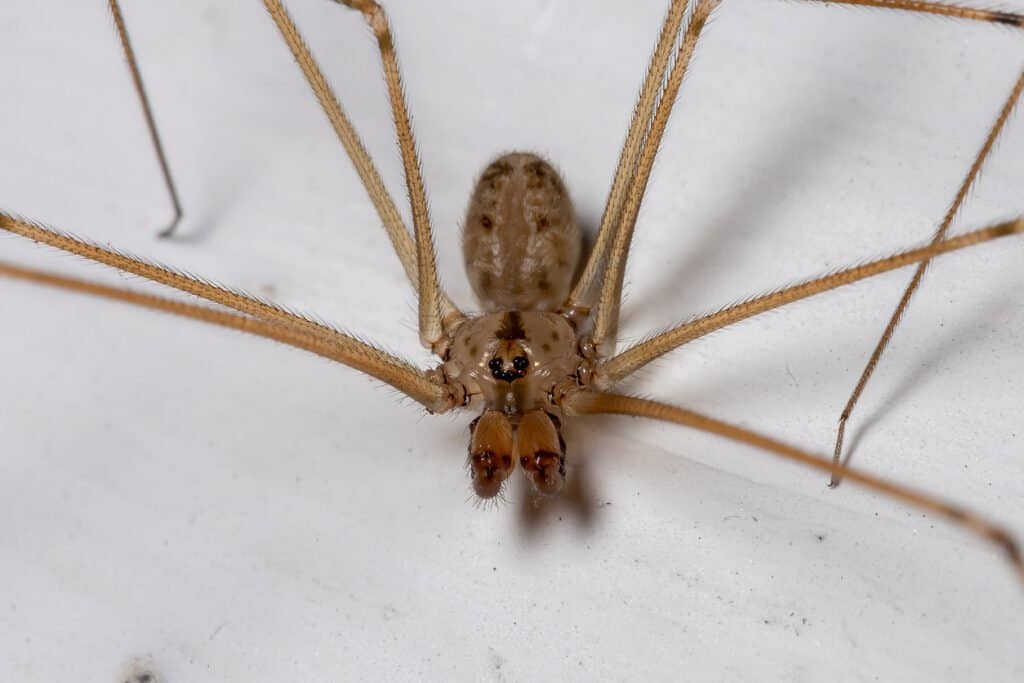
Cellar spiders make homes their refuge, according to their name.
©iStock.com/ViniSouza128
| Scientific Name | Size | Danger to Humans |
|---|---|---|
| Pholcus phalangioides | 1-2 inches | A bite may cause a mild burning sensation. |
The cellar spider goes by many names. It’s called the long-bodied cellar spider, skull spider, and even the daddy long legs. However, the term ‘cellar spider’ is apt because that is where it likes to hide in homes. You’ll also find them in garages, outbuildings, and other dark, wet places.
These spiders have somewhat translucent bodies colored tan, brown, or grayish brown color. They often have dark marks on their carapace that are said to resemble a skull. They may look scary with their long legs, odd movements, and unique body coloration. However, they aren’t dangerous.
A bite will only cause some mild burning and pain. Don’t put any stock into the urban legend that says these spiders would be deadly if they could pierce human skin. They’re not deadly, but they can kill dangerous spiders, like the black widow.
2. Six-Spotted Fishing Spider
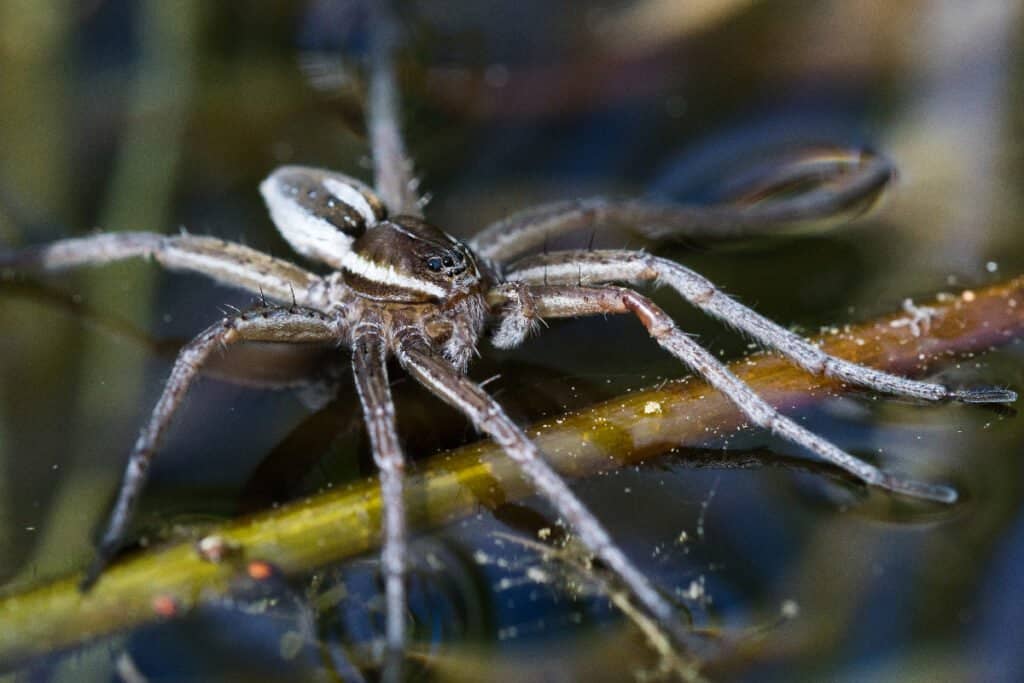
The six-spotted fishing spider is common in Idaho.
©Jukka Jantunen/Shutterstock.com
| Scientific Name | Size | Danger to Humans |
|---|---|---|
| Dolomedes triton | 0.35-2.4 inches | Bites can induce swelling and moderate pain similar to a bee sting. |
Fishing spiders from Dolomedes are among the biggest spiders in Idaho. The six-spotted fishing spider is a common sight in this state.
The spider does not get its name from the white spots on its dorsal abdomen. Instead, the spider’s name stems from six dark spots on its ventral abdomen. You’re not very likely to see these spots, though. These spiders are shy, and they do not appreciate the company of humans.
Like most other members of the Dolomedes genus, the six-spotted fishing spider is often found near water. If you don’t see it running across the water, you’ll find it on docks, wharves, boats, and other buildings nearby.
The six spotted spiders are often brown, dark brown, or gray with light stripes running down the sides of their entire body. They usually have white spots on their abdomen as well. They can walk, sit still, or dive below the surface of the water in search of prey. You would have to really make this spider mad to bite you, and then it would feel like you were stung by a bee.
1. Carolina Wolf Spider
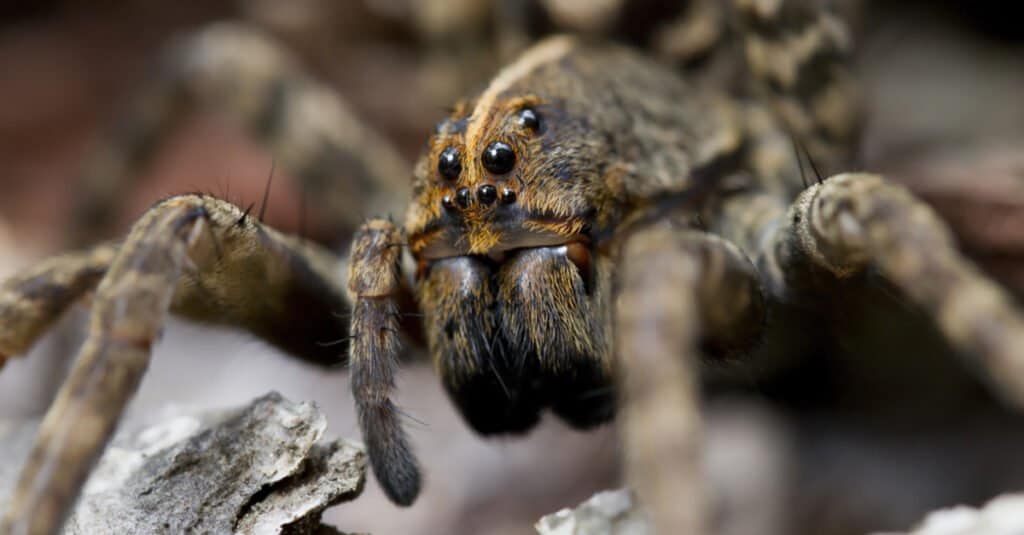
The Carolina wolf spider is one of the biggest spiders in Idaho.
©Will E. Davis/Shutterstock.com
| Scientific Name | Size | Danger to Humans |
|---|---|---|
| Hogna carolinensis | 2-4 inches | The bite from this spider causes local pain and swelling. |
The Carolina wolf spider is the king among the biggest spiders in Idaho, with a reported legspan that measures about four inches. This spider also has a body that measures over an inch. These are large creatures that scare people when they show up in their homes.
You can encounter these spiders in your basement, wandering around in forests, or waiting below rocks and logs to hunt their prey. They are fast hunters that do not rely on a web to catch their prey.
Carolina wolf spiders have light brown, black, or gray colors, often with a light overall color. Their cephalothorax will feature a large light stripe in the middle with two dark marks on either side. The abdomen can be mottled black and brown with a cardiac mark in the center in mature females.
This spider will not bite in most cases, even if it is handled. That doesn’t make it wise to handle one and antagonize it. If these spiders do bite, it will be painful and potentially cause an allergic reaction that includes a headache, dizziness, and other negative outcomes.
Having reviewed the biggest spiders in Idaho, let’s turn our attention to the most dangerous ones. You’ll need to learn how to identify, avoid, or eliminate the black widow spider in and around your home. You should also watch out for yellow sac spiders that cause a painful bite. Aside from those, you shouldn’t worry too much about spiders in your area as long as you give them space.
Summary of 5 of the Biggest Spiders in Idaho
Here’s a recap of the five largest spider species in Idaho that you can be on the lookout for.
| Rank | Spider | Size |
|---|---|---|
| 1 | Carolina Wolf Spider | 2-4 inches |
| 2 | Six-Spotted Fishing Spider | .35-2.4 inches |
| 3 | Cellar Spider | 1-2 inches |
| 4 | Hobo Spider | 1-2 inches |
| 5 | Trapdoor Spider | 1-2 inches |
The photo featured at the top of this post is © Will E. Davis/Shutterstock.com
Sources
- Utah State University (1970) extension.usu.edu/pests/uppdl/hobo-spiders
- Missouri Department of Conservation (1970) mdc.mo.gov/discover-nature/field-guide/cellar-spiders
- University of Wisconsin (1970) uwm.edu/field-station/6-spotted-fishing-spider/
- Web MD (1970) webmd.com/a-to-z-guides/what-you-need-to-know-about-a-wolf-spider-bite#:~:text=Wolf spiders don't pose,it shouldn't last long
Thank you for reading! Have some feedback for us? Contact the AZ Animals editorial team.






